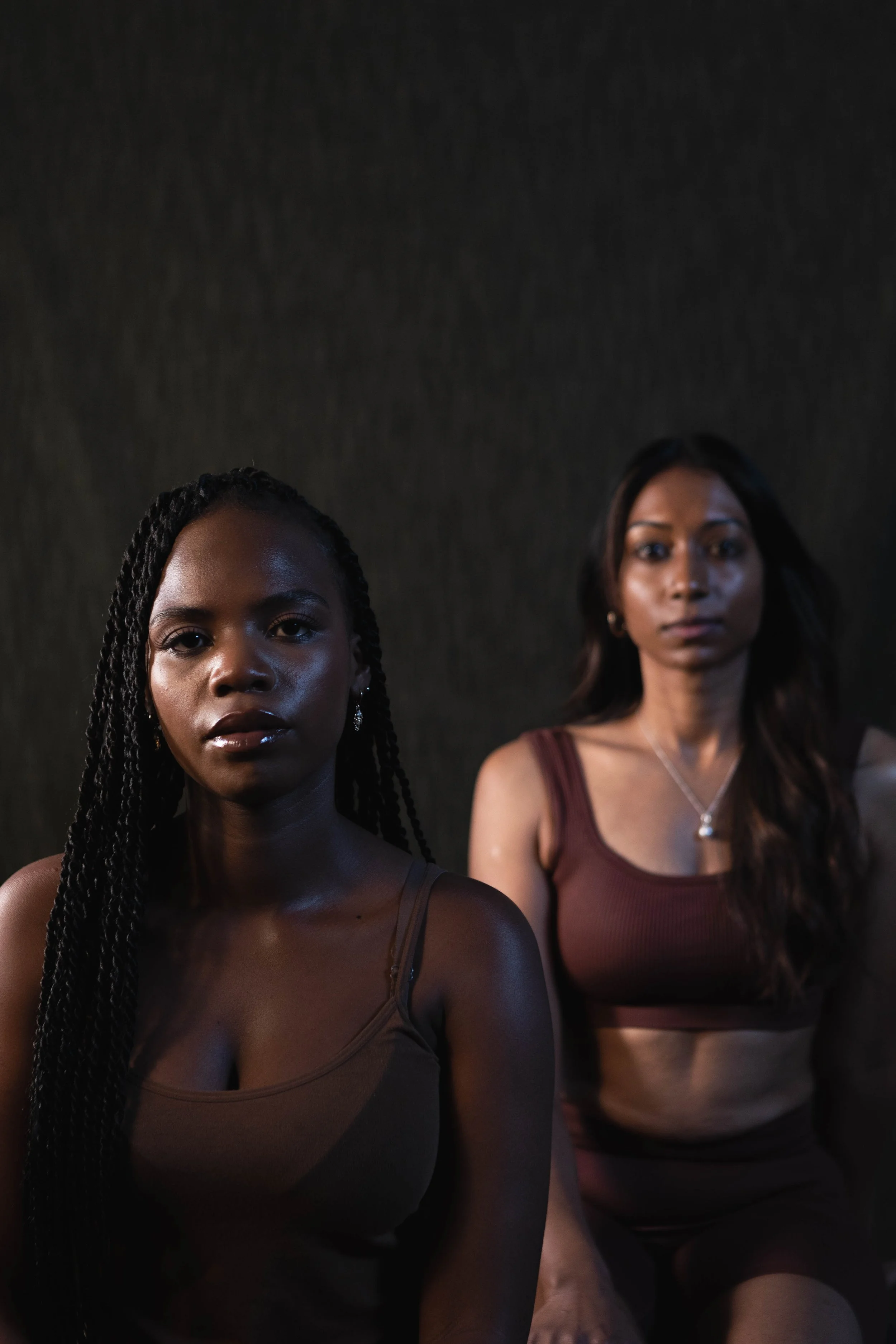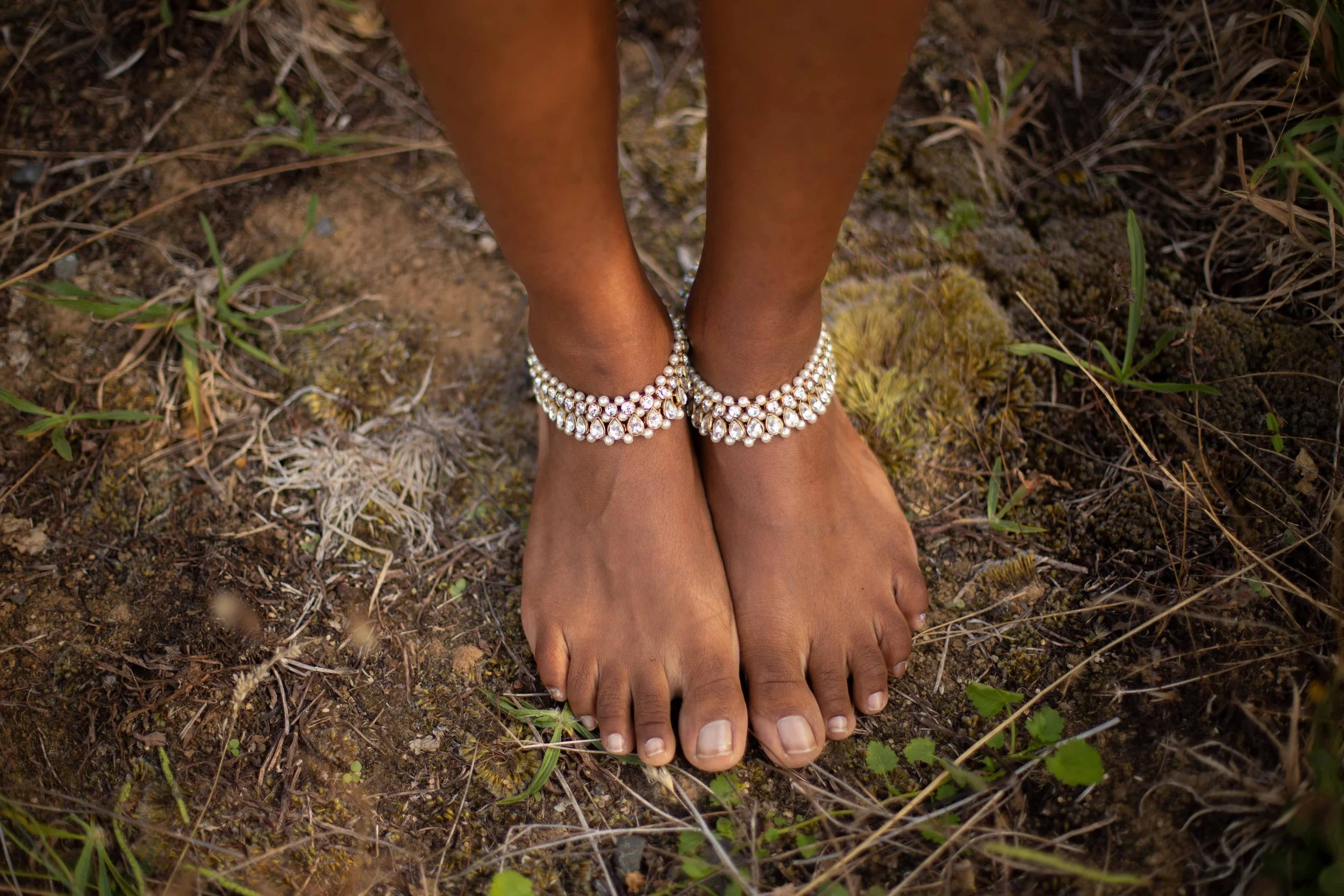6 September - 28 September 2022, Depot Artspace
29 April - 17 June 2023, The New Zealand Steel Gallery
June 3 - July 3 2023, Nathan Homestead, Manurewa
Melanin Rising was originally hosted on loveyourmelanin.com, which is currently offline.
Below, you can explore selected excerpts from the project.
Story by Kethaki Masilamani
Words by Dr Anna Ponnampalam
Decolonise your mind and embrace your melanin!
I wrote an open letter to my fellow Tamils in the society over 10 years ago, which included the following para (roughly translated to English):
// When will you realise that brown/dark skin tones are in no way inferior? Even if you do not want to realise it, can I ask you not to talk about this to my three year old kid? At this very moment, I would be satisfied with that. He knows that different people in the world have different shades of skin colour ranging from very fair skin tone to very dark skin tone. He himself has talked about how his parents and he have the same skin and asked for an explanation. Asking these types of questions, encouraging them to ask, and answering them are critical.
However, it is utterly reprehensible to compare kids’ skin tones or ask questions like, ‘why has he reduced colour?’, ‘Did you let him go in the sun?’ or say comments like, ‘Poor kid, don’t let him in the sun for too long, he would get darker’, ‘his complexion is a bit darker but he has nice features’, etc.
It's summer here. He is three years old. Active outdoor play should be encouraged, not discouraged. The skin colour becomes two/three shades darker with increased sun exposure as our skin produces more melanin. That is what is supposed to happen. What is wrong with that? Tamils are in general overtly proud of their ancestry. But somehow would not accept our natural skin tone and denigrate it. Why is that? Has any of you seriously thought about this?
It is common for children growing up/going to school especially in Western countries to question skin colour when they see different children outside/in schools. There is nothing wrong with that. If the child comes home and asks a question, please try to answer it clearly. Don't instil racism or inferiority complex in your child with your answer and please don't instil the idea that darker skin tone is somehow inferior into my son. //
That was over 10 years ago, I still get comments like that from fellow Tamils in Aoteoroa New Zealand at least once or twice a year, especially every summer.
Melanin in our skin is not an anomaly, not a health issue and definitely NOT something you have to fix! It is a remarkable adaptation to the environment our ancestors lived. First humans evolved in Africa and migrated out more than once. Humans who migrated but still lived closer to the equator got a lot of ultra violet radiation (especially the type B –UVB) from the sun, compared to humans who migrated further north from the equator. UVB penetrates the skin and is essential for the production of vitamin D by the skin. Vitamin D is the only vitamin our bodies produces following UVB exposure. Level of melanin in our skin is one of the greatest determinants of vitamin D production. While UVB is needed to penetrate the skin for vitamin D production, it can also be destructive to the cells. It can cause DNA damage and also break down another important nutrient in our bodies, folate. So our ancestors needed a balancing mechanism to allow vitamin D production, while limiting the destructive elements of UVB. Melanin came to the rescue as our skin’s first defence against the sun’s radiation. Amount of melanin production in humans evolved due to thousands of years of environmentally driven pressures, through natural selection to block enough UVB to allow for folate synthesis, yet allow enough UVB to penetrate the skin to allow for vitamin D production. It is clear that human skin tones arose as an adaptation to our climate.
So how did this humble melanin gets associated with everything from being unattractive to having fewer opportunities to basically being unhealthy?
The origin for colourism could be traced back to European colonization around the world. Scholars agree that modern day colourism can also be tied to earlier origins of caste systems in the Indian subcontinent. Indian caste system existed long before colonialism and played some role in stratification based on the colour of one’s skin. The Aryans established the caste system when they migrated to northern India around 1500 BC. It is prevalent throughout South and East Asia, particularly in the Indian subcontinent, where caste systems, certainly strengthened by European colonisation, Dalit racism and anti-blackness combine to create bigotry and discrimination. Historically, colourism has been used as a way to distinguish between different classes. Darker-skinned people did more hard labour or were out in the sun more for their occupation, where light-skinned people had less sun exposure. Fairer skin became associated with the ruling class and colonisation certainly seem to have sealed it into the current position. Traditional colourism combined with racism, congealed into a toxic mix of ideas that associated European features/lighter skin with power, wealth, beauty and lately even health.
Many research studies have shown that skin tone play powerful roles in who gets ahead and who does not. Is it not ridiculous to think that the amount of melanin our skin produces affect who gets hired, who gets better opportunities, who gets convicted, who gets harsher prison sentences and can be a deciding factor in selecting a spouse and marriage? But it does!
The casting of melanin as a kind of abnormality that needs to be controlled, only serves to heighten the normalization of Whiteness and indoctrinates darkness as a deviation from the norm. The association of beauty with fair skin is so entrenched in our societies. People have been playing with skin whitening products for as long as colourism existed. The practice can be traced as far back as the Ancient Egyptians, Romans and Greeks, even White women practiced it.
Overtime this led to internalisation of idea that fairer skin is superior and darker skin is inferior, especially among people of African and Asian origin. Capitalism and cosmetic industry have exploited these prejudices to sell skin whitening/bleaching products and for this issue to become a widespread global phenomenon.
Skin lightening products are a very lucrative business because of racist, sexist, classist, casteist systems. We have been conditioned to believe that fairer skin is better and even healthier, that Euro-centric beauty ideals are the ones to strive for. Aside from containing potentially harmful ingredients, the language used on the containers and advertisements of whitening creams reemphasises whiteness as the archetype of beauty. In addition they claimed that using these creams would boost a person’s confidence, would actually help you claim the success ladder.
It is nothing short of hypocritical and tokenism (to say the least) that these companies decided to change the explicit messages of ‘achieving fairness’ with ‘brightening’ or ‘glowing’ post black lives matter protests, without actually changing anything. What is even worse is that these companies are now adapting their languages to suggest that using these creams are about looking after the health of the skin and about self-care. I looked through several creams in the cosmetics section of my local Indian grocery store recently and found many of these creams had words and phrases to suggest ‘skin brightening, to make skin glow’ to literally saying that the creams will block melanin production or tanning, without actually saying ‘whitening’. Many of them contained 4% hydrogen peroxide as one of their main ingredients. A rose by any other name? These creams are produced by the major cosmetic companies Unilever, L'Oréal, etc. But you would not see these wording in the creams from these companies that are sold in the mainstream supermarkets in Western countries.
And when you think you cannot possibly see any more ridiculous whitening products, when you think they cannot possibly exploit your insecurities any worse than what they have already done – I present to you something to lighten your vagina! I kid you not.
Many of us Brown folks are happy to turn a blind eye to colourism in our own social circle, while crying out racism at the drop of a hat. We must do better. Breaking the vicious cycle of colourism will require recognizing its presence and confronting it head on, on a much greater scale. I see kids repeating the same age old stereotypic messages about not wanting to go in the sun in fear of getting darker, to other kids in our neighbourhoods. Kids learn these message from the adults in their lives, from the movies they watch, etc. Colourism and these discriminatory thoughts are learned through generations. They can and should be unlearned. We must work hard to undo the internalised colourism and racism. We should constantly evaluate our own language and actions and make sure we openly discuss these issues with kids and criticise the messages they get from their peers, family and media.
Further readings and citations
1. Chattopadhyay, D., et al., Asian Communication Research, 2019. 16(1): p. 105-138.
2. Eberhardt, J.L., et al., Psychol Sci, 2006. 17(5): p. 383-6.
3. Fernandopulle, S. Confronting Sri Lanka’s ingrained Anti-Blackness. 2020. https://groundviews.org/2020/06/10/confronting-sri-lankas-ingrained-anti-blackness/
4. Hall, R., Women of color spend more than $8 billion on bleaching creams worldwide every year, in The Conversation. 2021. https://theconversation.com/women-of-color-spend-more-than-8-billion-on-bleaching-creams-worldwide-every-year-153178
5. Jablonski, N., TED Talk, in Skin color is an illusion. 2009. https://www.ted.com/talks/nina_jablonski_skin_color_is_an_illusion/transcript?language=en
6. Jablonski, N.G., et al., Philos Trans R Soc Lond B Biol Sci, 2017. 372(1724).
7. Lucock, M., et al., Am J Hum Biol, 2018. 30(5): p. e23166.
8. Mire, A., What you need to know about rebranded skin-whitening creams, in The Conversation. 2020. https://theconversation.com/what-you-need-to-know-about-rebranded-skin-whitening-creams-143049
9. Mishra, N., Washington University Global Studies Law Review 2015. 14: p. 725-750.
10. Nagar, I., SAGE Open, 2018.
11. Ponnampalam, A.P. An Open Letter. Anna The Analyst 2012 [cited 2022 August 30th]; Available from: http://annatheanalyst.blogspot.com/2012/01/blog-post_23.html.
12. Torres, F., et al., Front Psychol, 2019. 10: p. 1516. https://www.frontiersin.org/articles/10.3389/fpsyg.2019.01516/full
13. Vedantam, S., Shades of Prejudice, in The New York Times. 2010.
14. Viglione, J., et al., The Social Science Journal, 2011. 48(1): p. 250-258.
15. Noman, N. Skin lightening in South Asia is why we have an anti-Blackness problem, in THINK – July 2020. https://www.nbcnews.com/think/opinion/skin-lightening-south-asia-why-we-have-anti-blackness-problem-ncna1233549
About Anna:
Anna Ponnampalam is a melanin loaded Tamil Sri Lankan Kiwi. She is a biologist at the University of Auckland. Her waged job as a basic scientist is to understand the biology of menstrual cycle, pregnancy and related complications. She is a parent to two kids. You can also catch her passionately talking/discussing/writing about public understanding of science, gender/racial/class equality, etc in many public spheres.



